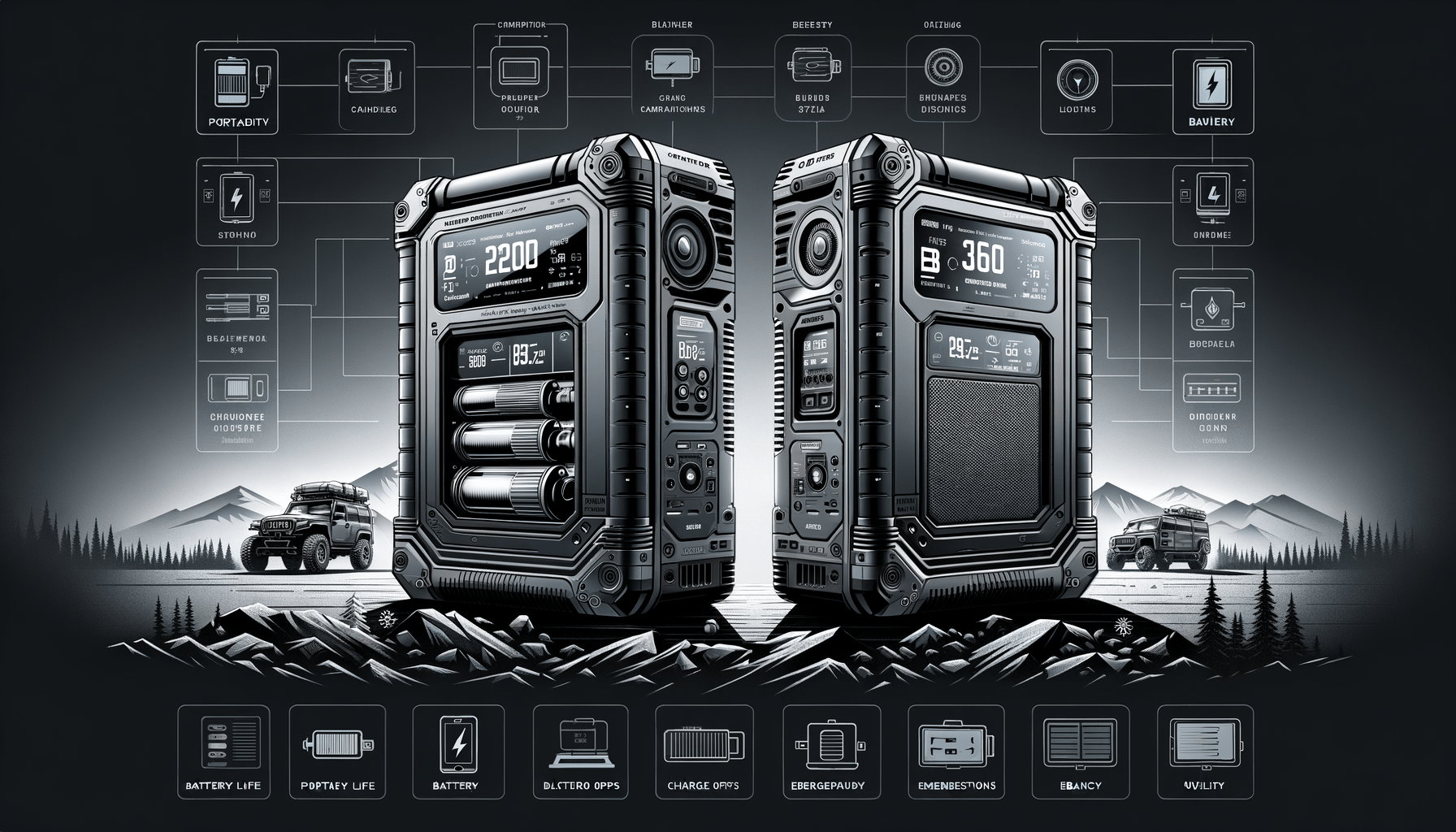Introduction
In the quest for reliable power solutions, the EcoFlow Delta Pro Ultra and the Jackery 500 stand out as noteworthy contenders. Designed for different needs and scenarios, each brings unique features to the table. This article will dive deep into the technical specifications and practical capabilities of both products, helping you make an informed decision based on your power needs.
Technical Specifications
| Specifications | EcoFlow Delta Pro Ultra | Jackery 500 |
|---|---|---|
| Dimensions | Inverter: 27.2×18.9×8.4 in, Battery: 26×18×8 in | 11.8×7.6×9.5 in |
| Weight | Inverter: 70 lb, Battery: 116.4 lb | 13.3 lbs |
| Output Range | 7.2kW to 21.6kW | 500W (Surge 1000W) |
| Battery Capacity | Expandable from 6kWh to 90kWh | 518Wh |
| Solar Input | 5.6kW to 16.8kW | Supports solar charging |
| Charging Times (Full Recharge) | Varies by method and capacity | Solar: 9.5 hrs, Wall: 7.5 hrs, Car: 7.5 hrs |
| Automatic Switchover | Yes, with Smart Home Panel 2 | N/A |
| Cooling Technology | Auto-cooling under 2000W | N/A |
| Stackability | Yes | No |
| Charging Options | Solar, generators, EV, grid | Solar, wall, car |
Design and Portability
When it comes to design and ease of mobility, there’s a clear difference between the two. The EcoFlow Delta Pro Ultra is a heavy-duty unit, tipping the scales with a combined weight of nearly 187 lbs and impressive dimensions meant for stationary usage but with the capability to be repositioned as needed. In contrast, the Jackery 500 boasts a lightweight, compact form factor that’s tailor-made for portability and ease of transport.
Power and Performance
The meat of the matter is power output and performance. EcoFlow Delta Pro Ultra is the clear juggernaut here, with an abundant power output range from 7.2kW to an enormous 21.6kW, which can handle nearly all home appliances. Meanwhile, the Jackery 500 delivers a consistent 500W with a surge capacity of 1000W, suitable for smaller devices and short-term use.
Battery and Energy Storage
Battery size is where EcoFlow flexes its muscle, proposing an expandable system from 6kWh to 90kWh, leaving the Jackery’s 518Wh capacity in the shade. This means that the Delta Pro Ultra could, in theory, power an entire home for a month given the right configuration, while Jackery is more suited for keeping your camping trip or emergency situation electronically sustained.
Eco-friendliness and Charging Options
Both units endorse solar energy use with varying degrees of efficiency. The Delta Pro Ultra’s significant solar input capacity at 5.6kW to 16.8kW dwarfs the Jackery’s solar capabilities, yet both aim to reduce your carbon footprint. Each has multiple charging methods including solar panel options, though the EcoFlow’s ability to connect with EV charging stations and existing solar setups gives it more flexibility.
Safety and Reliability
Safety cannot be compromised when it comes to power units. The Jackery 500 is equipped with an intelligent Battery Management System and a pure sine wave inverter, providing a stable energy flow to connected devices. EcoFlow bumps up the safety with its auto-cooling technology and an Online UPS for uninterrupted power, ensuring household appliances remain unaffected during outages.
Unique Features
The feature list continues to impress with the EcoFlow’s silent operation under load and its Smart Home Panel 2 that offers energy management at your fingertips. The Jackery doesn’t lag too far behind with its solid build quality and temperature resilience, but it lacks the smart integration and expandability found in the EcoFlow.
Conclusion
Weighing the pros and cons of both power stations, it boils down to your specific energy requirements. If you need a mobile solution for less demanding devices, the Jackery 500 is an excellent, trustworthy choice. Alternatively, when the demand is for an extensive, robust home backup system with smart features and scalability, the EcoFlow Delta Pro Ultra is unquestionably top of its class.




Leave a Reply